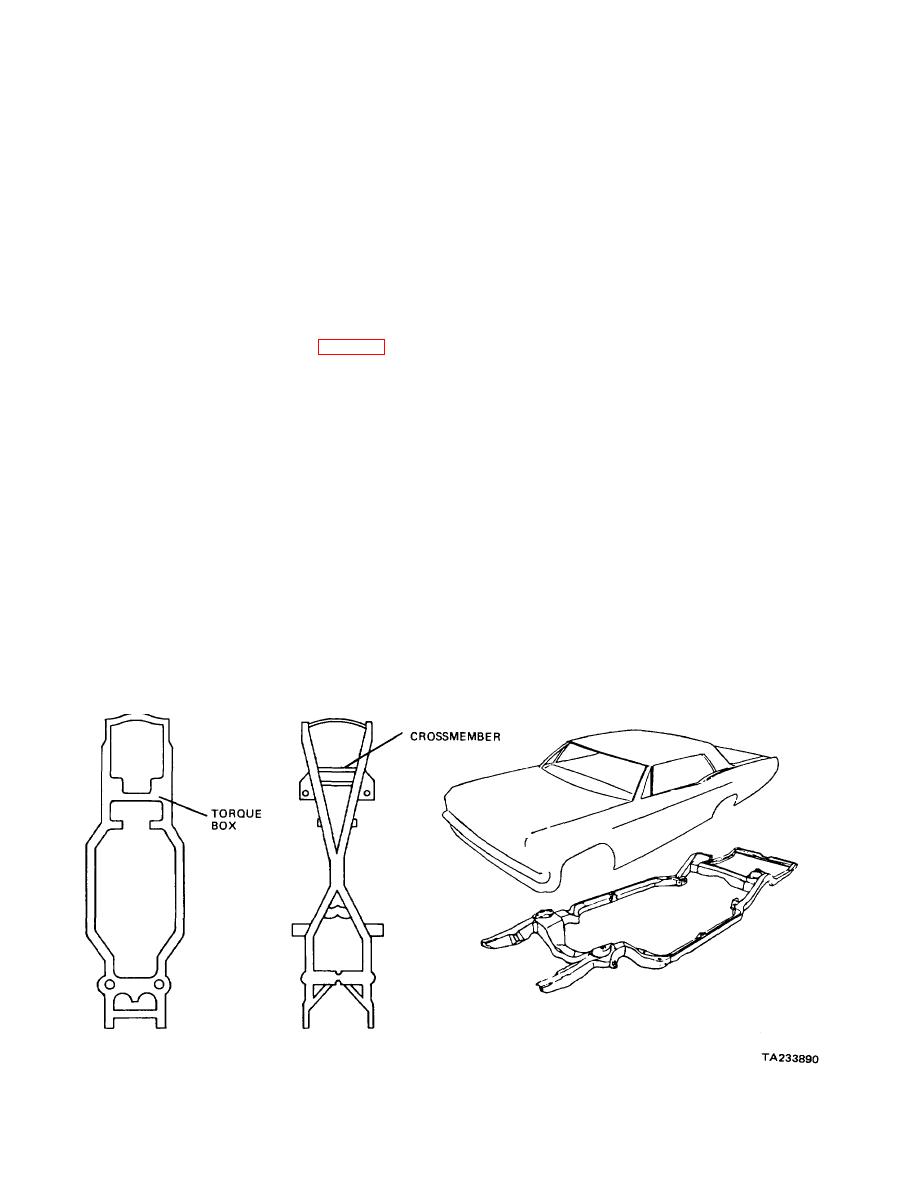
| Tweet |

Custom Search
|
|

|
||
 TM 9-8000
PART SIX
HULLS, BODIES, AND FRAMES
CHAPTER 35
VEHICLE STRUCTURE
Section I. WHEELED VEHICLES
-
from the frame. In some cases, particularly under severe
35-1. Separate Frame and Body. The separate frame
operating conditions, the body structure may be
and body type of vehicle construction (fig. 35-1) is the
subjected to some torsional loads that are not absorbed
most common technique used when producing most full-
completely by the frame; however, this is not common.
sized automobiles and cargo vehicles. In this type of
This explanation basically applies to heavy trucks and
construction, the chassis frame and the vehicle body are
not to passenger automobiles. In a typical passenger
made separately and each is a complete unit by itself.
automobile, the frame supplies approximately 37 percent
The chassis frame is designed to support the weight of
of the torsional rigidity and approximately 34 percent of
the body and absorb all of the loads imposed by the
the bending rigidity; the balance is supplied by the body
terrain, suspension system, powerplant, drive train, and
structure. The following are the most important
steering system while the body merely contains and, in
advantages of the separate body and frame construction.
some cases, protects the cargo. The body generally is
a. Ease of mounting and dismounting of body structure.
bolted to the frame at a few points to allow for flexure of
the frame and to distribute the loads to the intended
b. Versatility; various body types can be adapted
load-carrying members.
readily to standard truck chassis.
With this type of construction, the body structure only
c. Strong, rugged designs are achieved easily,
needs to be strong and rigid enough to contain the
weight of the cargo and resist any dynamic loads
although at a penalty to vehicle weight.
associated with cargo handling and cargo movement
during vehicle operation and to absorb shocks and
vibrations transferred
Figure 35-1. Separate Frame and Body.
35-1
|
||
 |
||